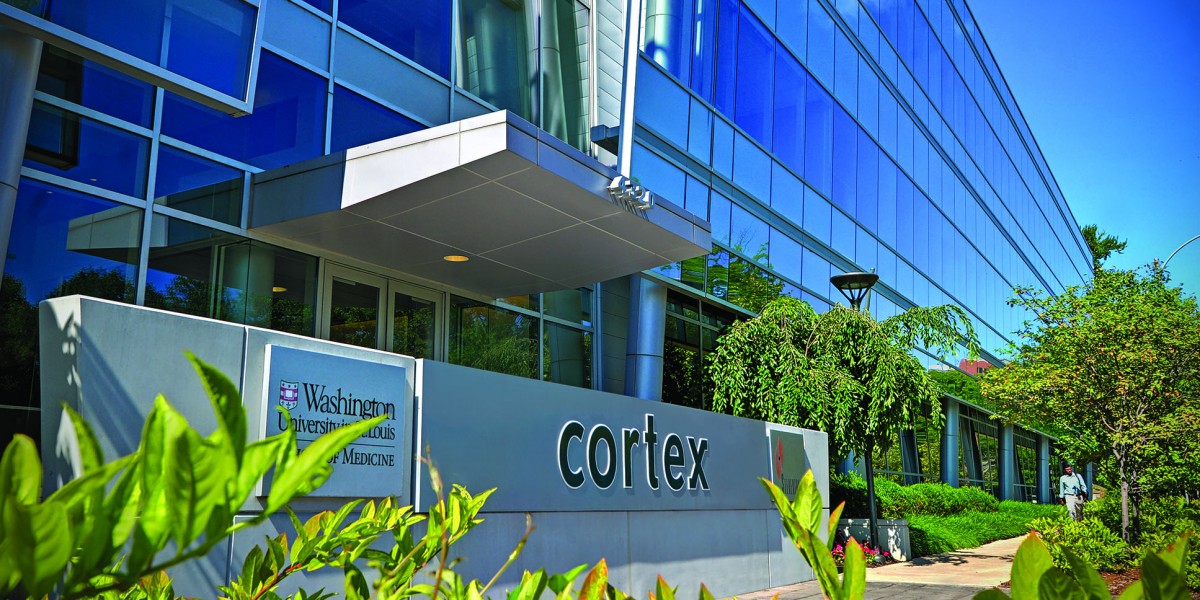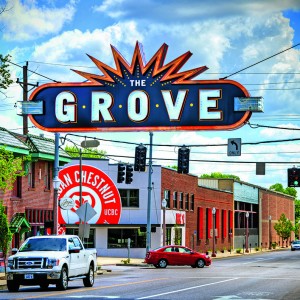Research Triangle Park in Raleigh, Durham, Chapel Hill. Kendall Square in Boston. South Lake Union in Seattle. And, now, the Cortex Innovation Community in St. Louis.
In the past decade, innovators and entrepreneurs in the life sciences have transformed a once-desolate stretch of midtown St. Louis into a leading biohub. State-of-the-art biomedical science and technology labs and incubators have replaced decaying buildings and vacant lots. And, in a city too often divided, Cortex has brought together community, civic and educational leaders to get things done.
St. Louis Mayor Francis G. Slay calls Cortex a game changer. The district has attracted more than $550 million in investment, has generated more than 4,000 permanent jobs and has spurred new lofts, hotels, restaurants and shops.
“What we are seeing develop at Cortex will drive job growth in our city,” Slay says. “I absolutely believe that our ability to attract, retain and develop talent in the life sciences and other [biotechnology] fields will drive the future of St. Louis, and Cortex and Washington University will play a huge role in our ability to accomplish those goals.”
Washington University is both a benefactor and a beneficiary of Cortex. Chancellor Emeritus William H. Danforth was among those who originally conceived of the project. Under Chancellor Mark S. Wrighton’s leadership, the university contributed $15 million of the initial $29 million investment, with BJC HealthCare, Saint Louis University and University of Missouri–St. Louis (UMSL) contributing the remaining funds. Wrighton says that “when St. Louis succeeds, so does Washington University.”
“Cortex is a tool for economic development in St. Louis, but it also serves our teaching, research and patient-care missions,” Wrighton says. “By improving the area around the Washington University Medical Center, we become more attractive to the highest-quality faculty and students. Also, through Cortex, we are providing our faculty an opportunity to commercialize their work. Along with teaching and research, our faculty members see commercialization as a way they can help make the world a better place.”
The world has taken note. Popular Mechanics in January 2015 named St. Louis the No. 1 startup city in America. And The New York Times in fall 2014, in “Where Young College Graduates Are Choosing to Live,” found that since 2000 St. Louis enjoyed a 26 percent spike among graduates 25 to 34. Not all of those young people and startups are located in the district, but Cortex has created a dynamic culture of innovation and entrepreneurship, says Thomas F. George, UMSL chancellor.
“Cortex stimulates other kinds of development across the region,” says George, “and it has emerged as a leading example of a new model of innovation district in which academic institutions, companies, startups, business incubators and accelerators are clustered together to facilitate ‘open innovation’ and provide nearby amenities and mixed housing to entrepreneurs.”
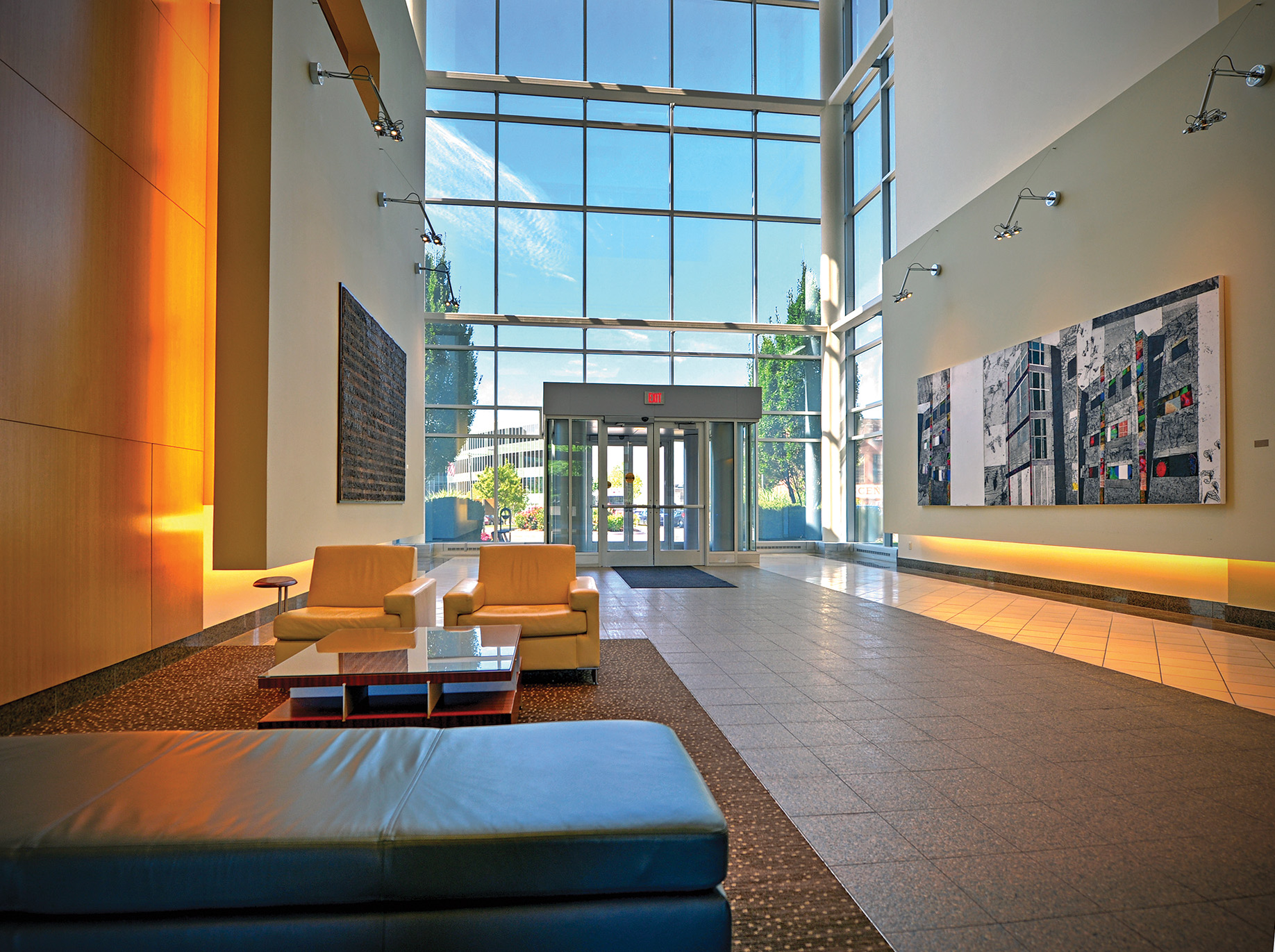
Development, infrastructure, jobs
Located on 200 acres between the Washington University Medical Center on the west and Saint Louis University on the east, Cortex is home to businesses large and small. Solae, a subsidiary of DuPont, is there. So is Ventures, Boeing’s internal idea generator. About 60 startups, many founded by Washington University faculty and alumni, also are located in Cortex. They include PixelEXX Systems, a nanosensor-technology company; Medros, a drug-discovery business; and Cofactor Genomics, a DNA-sequencing operation that made headlines mapping the genes of rocker Ozzy Osbourne.
Joining them in 2015 is LaunchCode, the nonprofit venture started by Jim McKelvey, AB ’87, BSCS ’87, co-founder of Square. LaunchCode seeks to solve two of the economy’s most urgent problems — the lack of good, middle-class jobs and the shortage of tech talent. By training unemployed and underemployed workers to code, LaunchCode is tackling both issues. In its first year, it placed 115 trainees in jobs paying an average of $50,000.
Then there is IKEA. The Swedish home-furnishings retailer is constructing a 380,000-square-foot store in the Cortex district. Most IKEA stores are located in far-flung suburbs, but IKEA officials like Cortex’s proximity to college students and St. Louis’ trendiest neighborhoods. The store is scheduled to open this fall.
Funding also has been secured for a Cortex MetroLink station and a new bike trail connecting the Cortex station to the regional Great Rivers Greenway. Ultimately, Cortex could generate $2.1 billion in construction (including state and local funds), $100 million in public infrastructure and 13,000 new jobs.
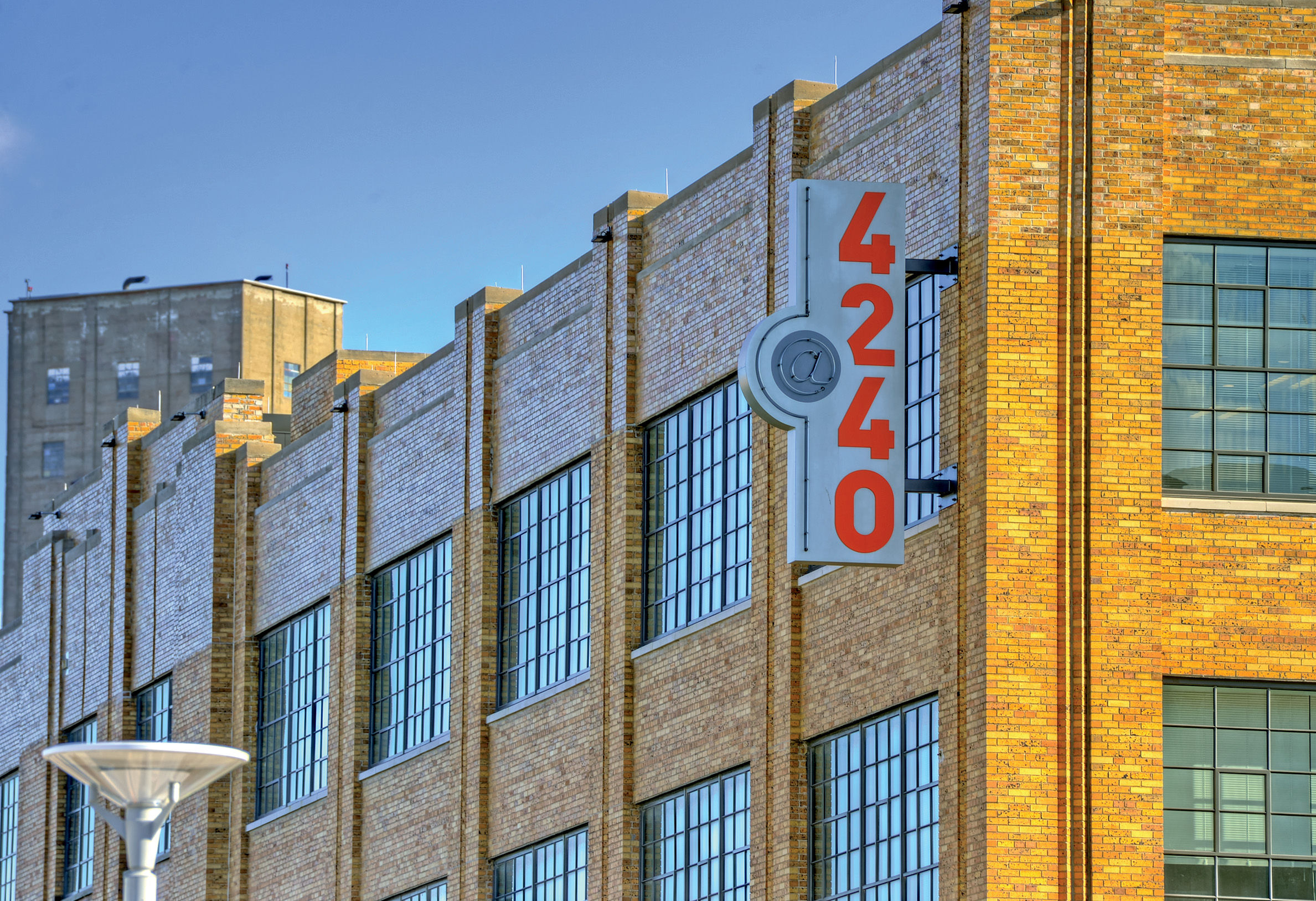
The rise of an innovation district
Cortex Chairman John Dubinsky, AB ’65, MBA ’67, traces Cortex’s start to 2002, when a group of St. Louis civic leaders toured Kendall Square in Boston. Once blighted, Kendall Square is now a leading hub for biotech innovation, thanks largely to a sizable investment by MIT. Dubinsky, a Washington University trustee, and William H. Danforth, who founded the Donald Danforth Plant Science Center after retiring from the university, believed a similar investment could spark innovation and spur economic development in St. Louis.
“Everyone understood that if you make your local community stronger, you make your institution stronger.”
John Dubinsky
“We came back and said, ‘Wow. That is the answer for St. Louis. We need to get the institutions to help rebuild the city,’” Dubinsky recalls. “We shared with Chancellor Wrighton what we had seen and then asked him for $15 million. He said yes. With that commitment, we went to the other institutions and asked them to invest part of their reserves into the local community. We didn’t know what to expect, but everyone understood that if you make your local community stronger, you make your institution stronger.”
Boston and St. Louis are not the only cities to establish an innovation district. Cleveland, Pittsburgh, Toronto and Barcelona are among the other cities to establish one. But St. Louis’ multi-institutional approach is unique. A 2014 report by the Brookings Institution, “The Rise of Innovation Districts: A New Geography of Innovation in America,” singles out Cortex for its collaborative leadership and strong vision for growth.
“St. Louis is a community of strong anchors,” says Hank Webber, Washington University executive vice chancellor for administration and vice chair of the Cortex board. “You can’t solve any big problem without assembling a coalition of interests. If you want to change facts on the ground — if you want to build a neighborhood or downtown or Forest Park — you must build a coalition. From the start, this has been a St. Louis project, not a Washington University project.”
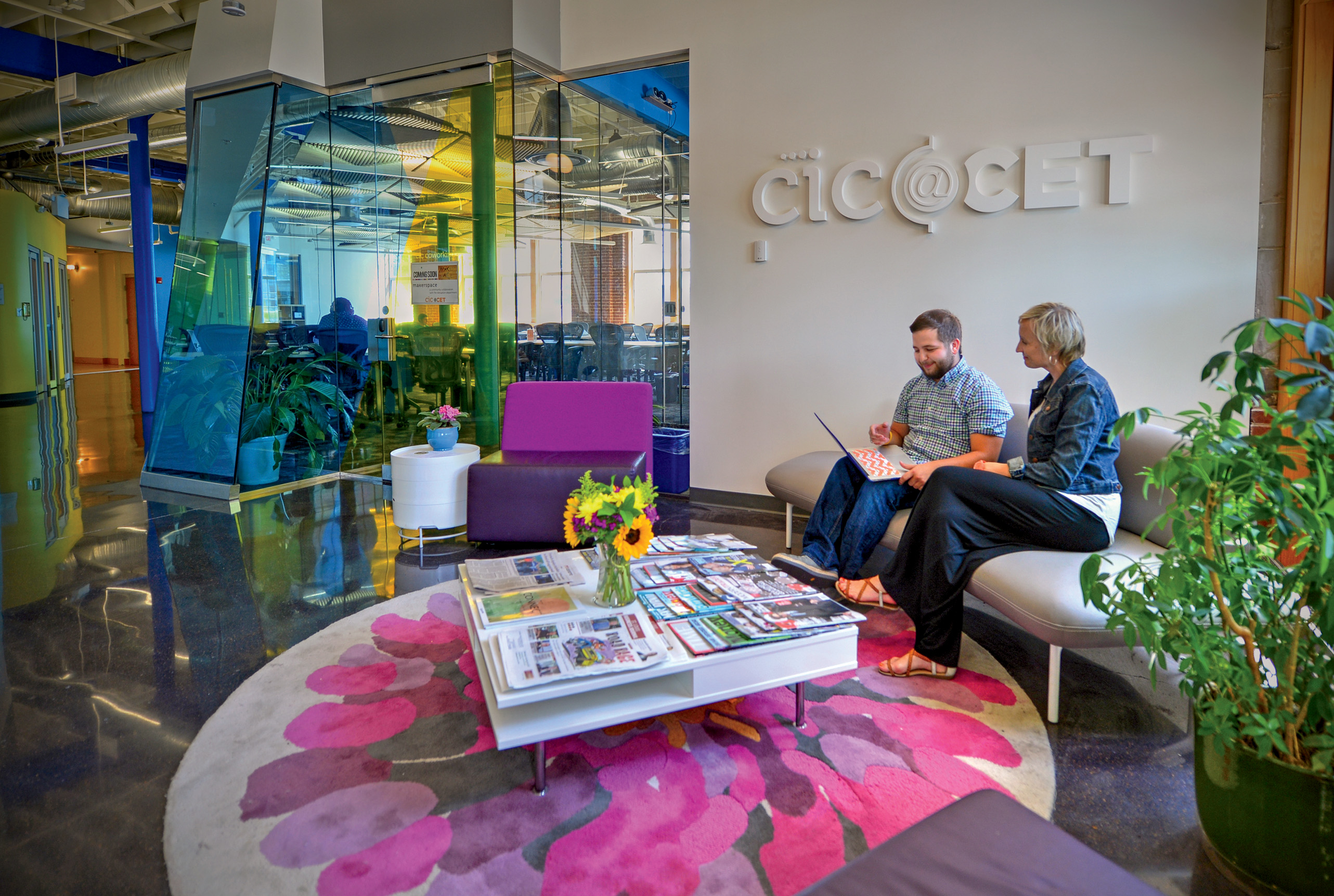
Building an entrepreneurial ecosystem
Another distinction is Cortex’s location, says Fred P. Pestello, president and chief executive officer of Saint Louis University. Unlike the nation’s early innovation districts, Cortex is located in the heart of St. Louis.
“Cortex and other innovation districts — in underused and underserved areas — are changing the way we think about entrepreneurship, and they are transforming communities and improving people’s lives in ways that places like Silicon Valley and suburban technology parks cannot,” Pestello says. “This is particularly important for SLU, an urban anchor institution with a long-standing commitment to the city.”
Cortex also is adjacent to the thriving Central West End — named one of the nation’s 10 best neighborhoods by the American Planning Association in 2014 — as well as the Grove and Grand Center, two destination neighborhoods experiencing their own turnarounds. The region’s quality-of-life amenities, coupled with the deep reservoirs of talent at Washington University, Saint Louis University and other nearby universities, give Cortex its edge, says Washington University Provost Holden Thorp, PhD.
While chancellor of the University of North Carolina at Chapel Hill, Thorp spent many hours driving back and forth between his campus and Research Triangle Park, the prototype of the suburban innovation center. Millennials, however, want to live in urban, live–work neighborhoods, says Thorp.
“In St. Louis, there is a low cost of living, terrific architecture and all the amenities of a great city — great performance and art venues, attractions and pro sports,” Thorp says. “All of the incentives align nicely.”
Thorp, the owner of 12 patents and founder of several companies, is leading Washington University’s efforts to support faculty and student entrepreneurs. He has hired key personnel to streamline the commercialization of faculty discoveries and is strengthening university entrepreneurship programs.
“There is a growing acceptance of the idea of graduating from college and going to work at a startup,” Thorp says. “Some of that is the folklore around startups — Mark Zuckerberg and The Social Network and Steve Jobs. And part of it is the democratization of information. Our job is to help provide our community opportunities, and Cortex is one, very important way we do that.”
Jennifer K. Lodge, PhD ’88, Washington University vice chancellor for research, says Cortex helps attract world-class faculty.
“It’s getting out that St. Louis is on the move. Boeing [Ventures] and the Cambridge Innovation Center moving to Cortex are big headlines.”
Jennifer K. Lodge
“It’s getting out that St. Louis is on the move. Boeing [Ventures] and the Cambridge Innovation Center moving to Cortex are big headlines,” says Lodge, who recently moved near the district and is wowed by the rapid pace of development. “As we recruit new faculty and students, we can assure them that if they have entrepreneurial aspirations, they will find the support to realize them here. This district enhances not only Washington University, but also the overall intellectual capacity of St. Louis.”
Donn Rubin, president and CEO of BioSTL, says the term entrepreneur used to be a dirty word in St. Louis. But no longer.
“If someone said, ‘I left XYZ to start my own company,’ people would wonder why the person couldn’t hack it in the big corporation,” Rubin says. “That’s all changing. And we are seeing faculty recruited here who have that entrepreneurial focus.”
BioSTL, which is sponsored by Washington University among others, advocates for legislation that supports the life sciences, raises venture capital, recruits businesses to the region and helps entrepreneurs find investors and develop patents. BioSTL’s venture development and investment arm, BioGenerator, operates shared lab space located in the Cortex district. About half the 25 companies based in the BioGenerator Labs are connected to Washington University faculty.
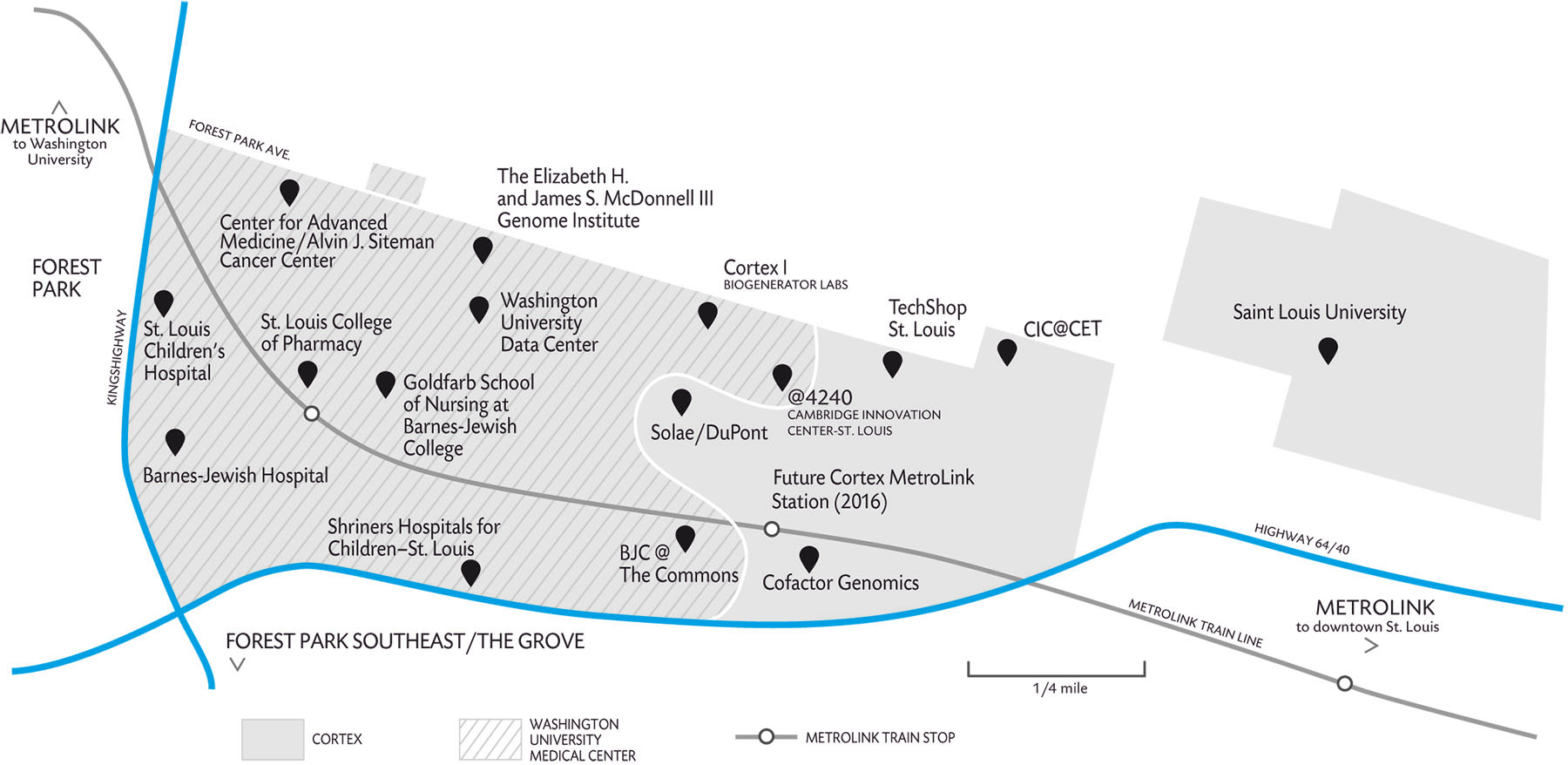
“We are building an entire ecosystem,” Rubin says. “We’ve met with 140 venture capitalists, and more than 80 have come to St. Louis. Most of them don’t know the story. It’s not unlike Washington University recruiting students: Once you get them to visit, they’re convinced. It’s the same thing for investors: Get them here, and they’re blown away by the depth of the talent.”
Jarret Glasscock, PhD ’04, founder of Cofactor Genomics in Cortex, agrees that seeing is believing. Cofactor provides full genome sequencing, DNA sequencing, RNA sequencing and other services to agriculture, pharmaceutical and biotechnology companies.
“We fly our top candidates here,” Glasscock says. “St. Louis can be a tough sell to those considering a position on the East or West Coast, but candidates often are surprised by what St. Louis has built.”
Glasscock, an Arizona native, earned his doctorate in genetics at Washington University and was a key scientist at the university’s Genome Sequencing Center (now The Elizabeth H. and James S. McDonnell III Genome Institute). He started Cofactor seven years ago and in fall 2013 moved the operation to an old printing shop.
“I am a scientist. I didn’t know everything that had to come together [to create a startup], and Cortex assisted me through every step of the process,” Glasscock says. “Now we have this amazing space with room to grow.”

The office, with its polished concrete floors and glass-enclosed offices, fits the image of cool startup. A drum kit and skateboard welcome workers and visitors in the break room, and ski gondolas in the lobby allow Cofactor’s team of biologists and computer scientists privacy for phone calls. But what Glasscock likes best about the space is its proximity to other life sciences companies.
“We didn’t just want a place to work, but a place to share ideas,” he says. “As Cortex grows, so will the opportunities to learn from one another. Whether you’re part of a three-person startup or a more established company, you want the same thing — a concentration of people who are smart, talented and ready to make a difference.”
